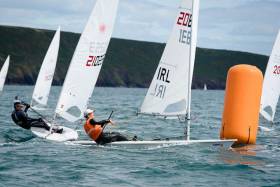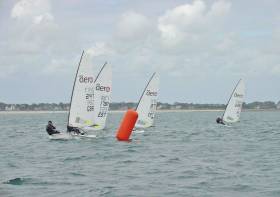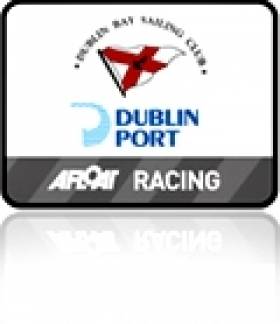Displaying items by tag: Sean Craig
Royal St. George's Sean Craig has finished third at the BDO Barcelona Masters Laser Radial Regatta today, a warm-up event for the European Masters in Roses, Spain next weekend.
The 60-boat event began with a windy and wavy first day, a tricky second day with very confused seas in 8-10 knots and finished with no wind today and no racing.
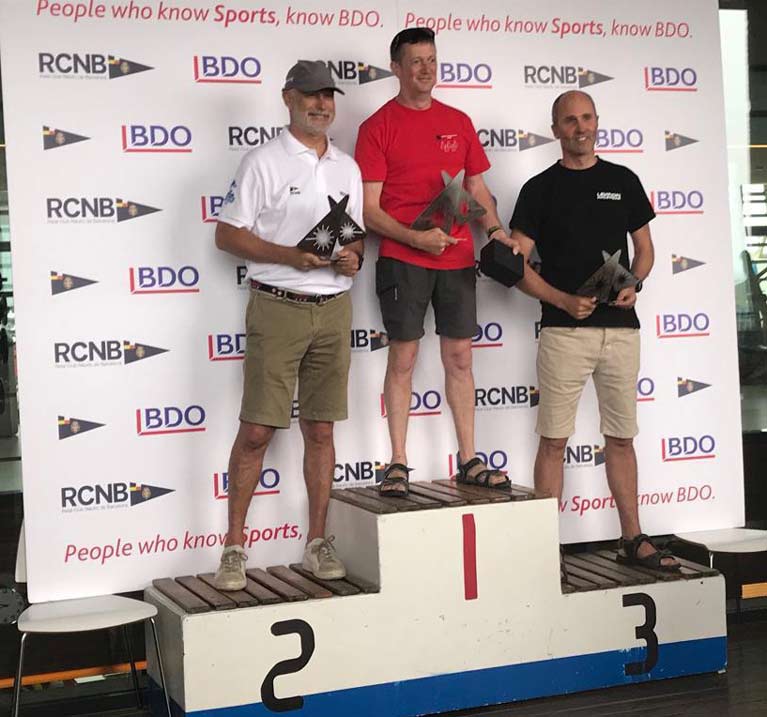 Dublin's Sean Craig on the Laser podium in Barcelona
Dublin's Sean Craig on the Laser podium in Barcelona
The winner was Ian Jones, who was second in the Masters Division at the Dun Laoghaire World Championships last September.
The Spaniard in second is also in the Grand Master Division like Craig. Next weekend's Roses event has 120 Radials entered and is expected to be a much more competitive affair.
The scoreline's impressive but it belies the fact that on the water the National Yacht Club's Finn Lynch is not getting things all his own way at Royal Cork Yacht Club's Laser National Championships. A string of wins came to an end in race six this morning when Tokyo 2020 rival Liam Glynn, the former Topper World Champion, took the gun but it was business as usual in races seven and eight as Lynch built a six–point advantage over the Ballyholme YC man. Royal Cork's own Nick Walsh is third but some 17–points off Glynn.
Although Johnny Durcan made the tough decision to sit out the Laser Radial Worlds in Medemblik, Holland after day two (he was lying thirteenth after the first day) the Cork helmsman, who is recovering from injury after a capsize in California, was in fact back in action at the Nationals today, on the third day of competition in the full rig division, and counted a 3,4,2 to be right up there with Olympic trialists, Lynch and Glynn. See the standard rig results here.
Race officer Peter Crowley sailed the combined fleets in a westerly breeze outside Cork Harbour today.
 Sean Craig moves up to second overall in the 32-boat Radial fleet after eight races sailed Photo: Bob Bateman
Sean Craig moves up to second overall in the 32-boat Radial fleet after eight races sailed Photo: Bob Bateman
Royal Cork's Luke McGrath stays top of the Radials and he has 20–point margin over Sean Craig, a recent Radial rig convert, who has moved into seconf place. The Royal St. George multi–champion is now four points clear of club mate Patrick Cahill on 36 points. Read the Radial results here.
In the 4.7 fleet, Jack Fahy also maintains his overall lead with a seven point cushion and in a show of strength for the Royal St. George Yacht Club, another George helmsman is second with Tom higgins counting 18–points. Third is Michael Carroll from Kinsale YC. 4.7 results are here.

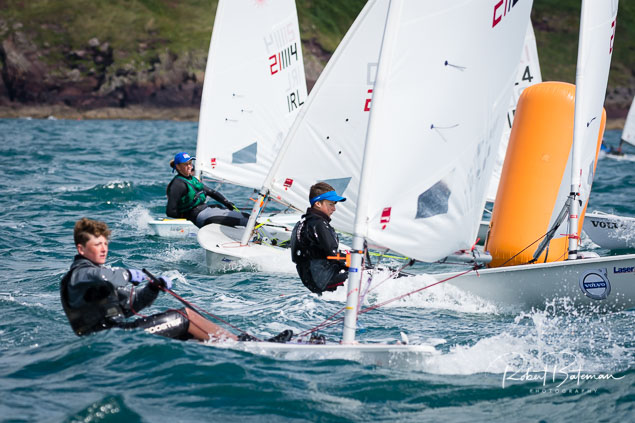

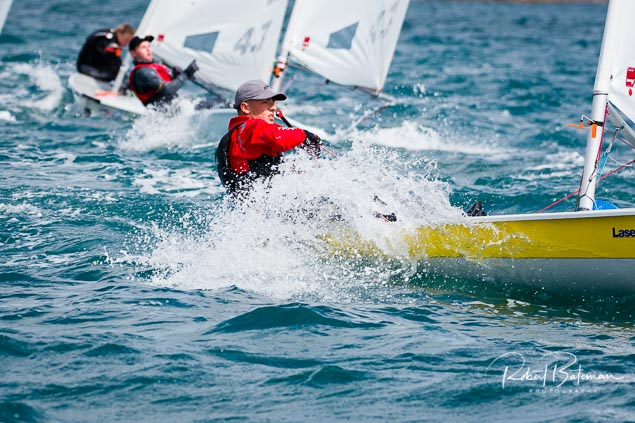

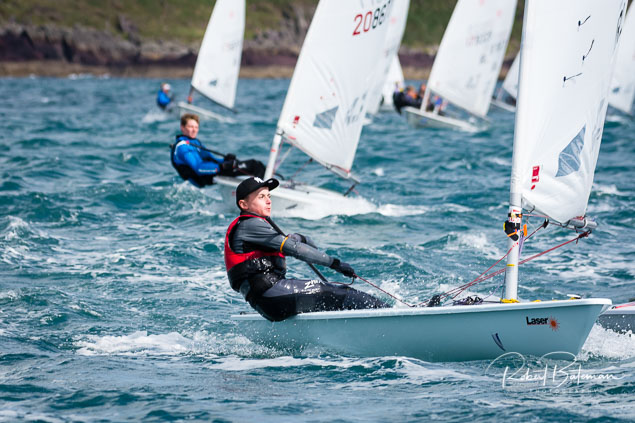
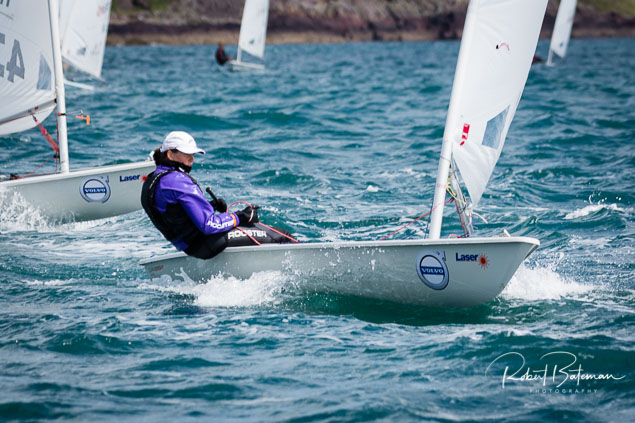
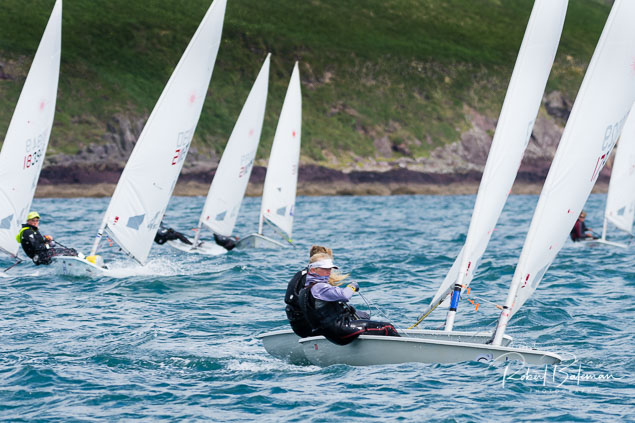
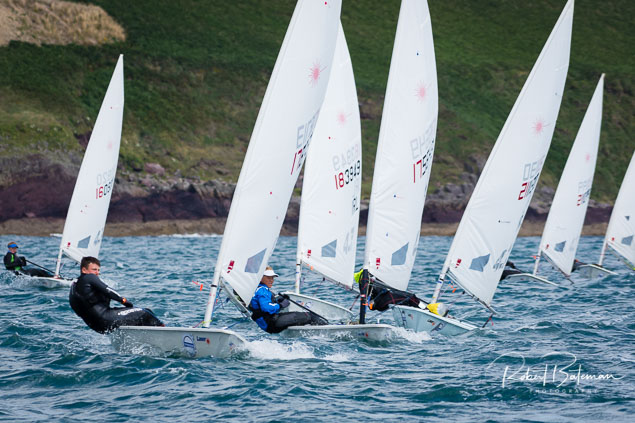


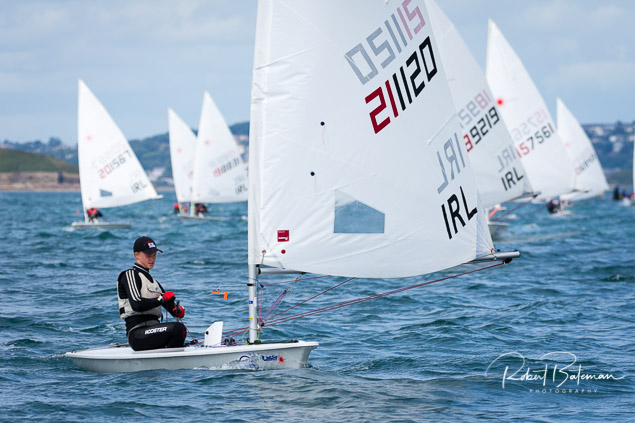
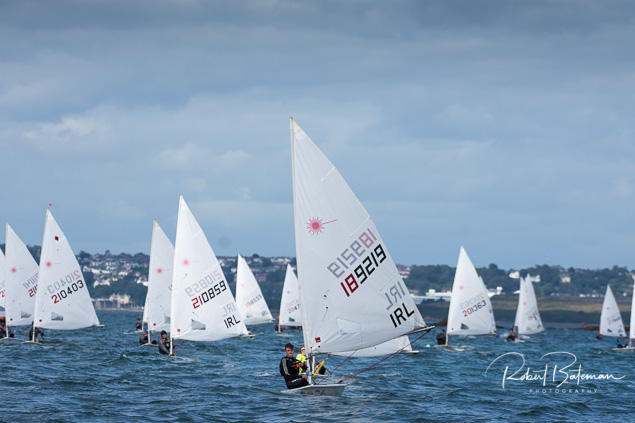
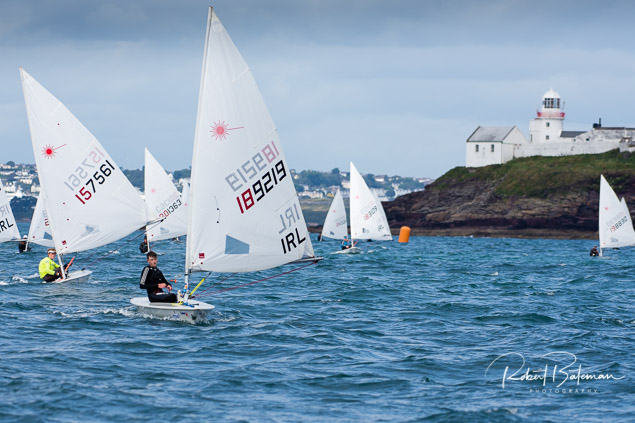
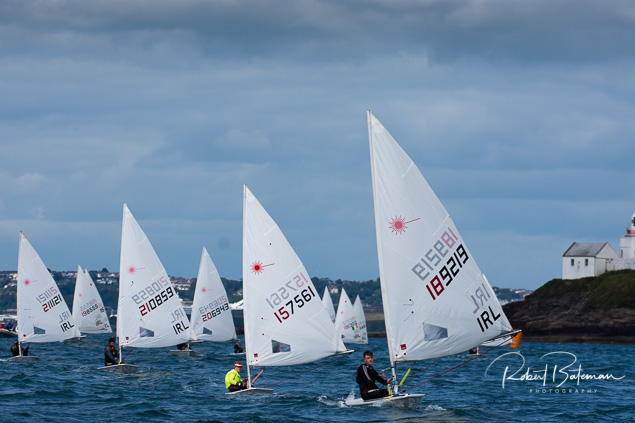
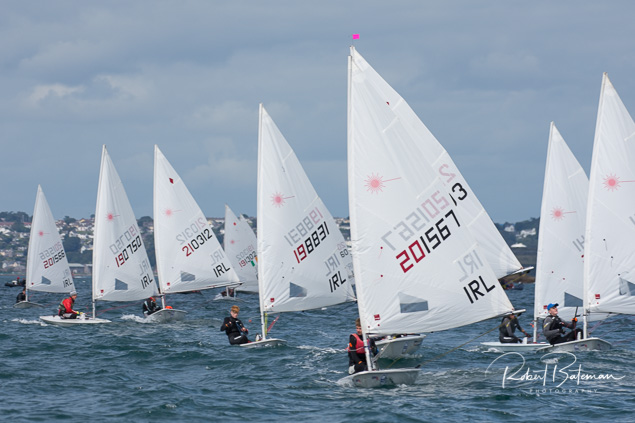
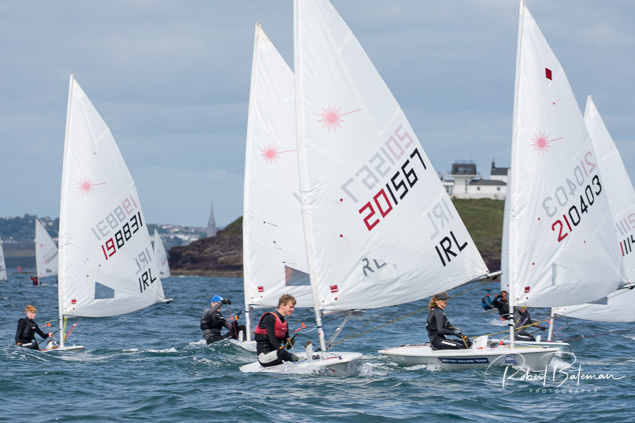
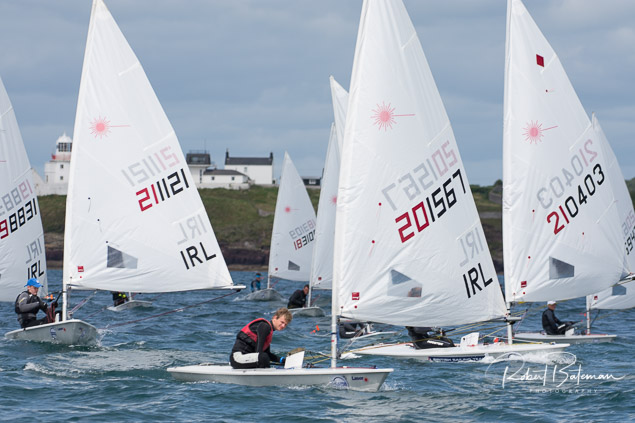

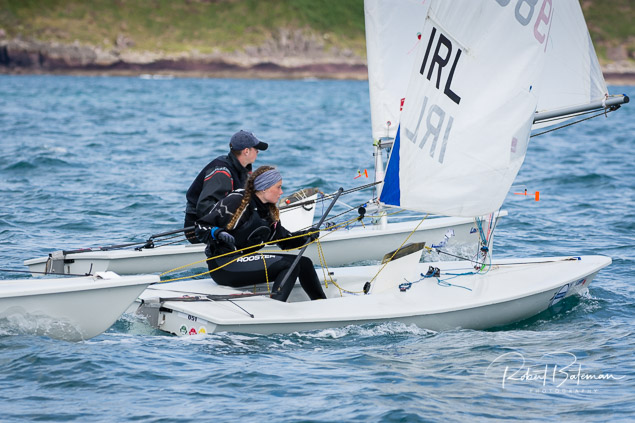
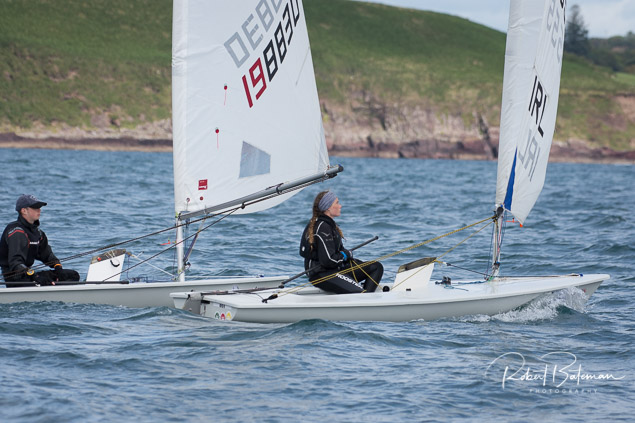

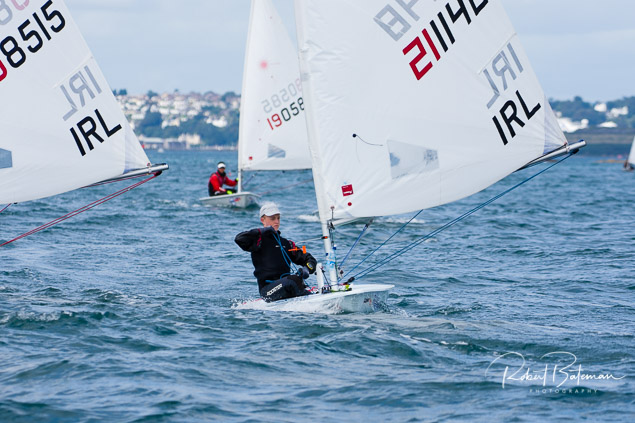
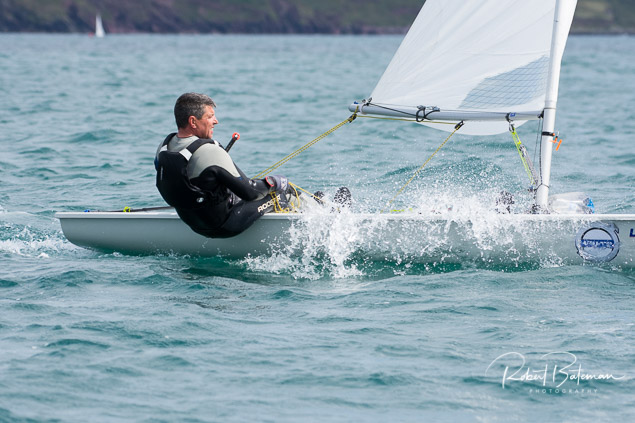

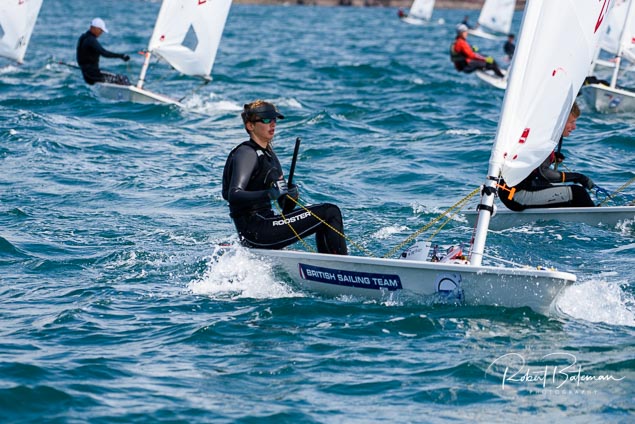
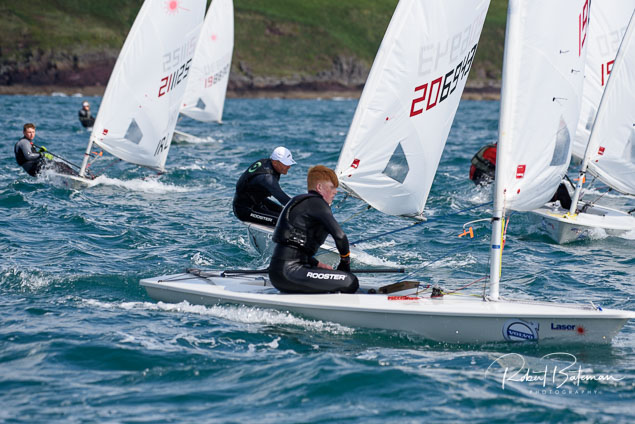




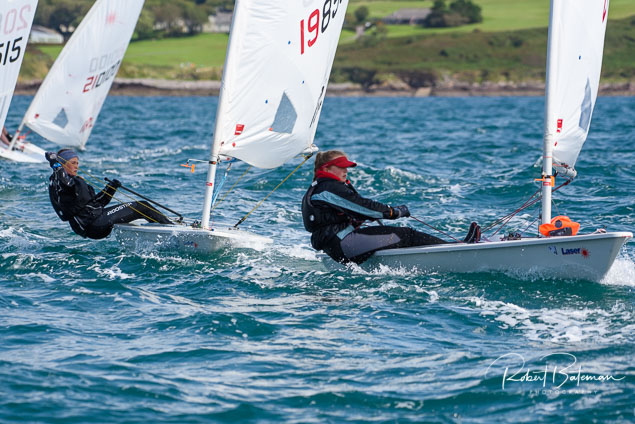
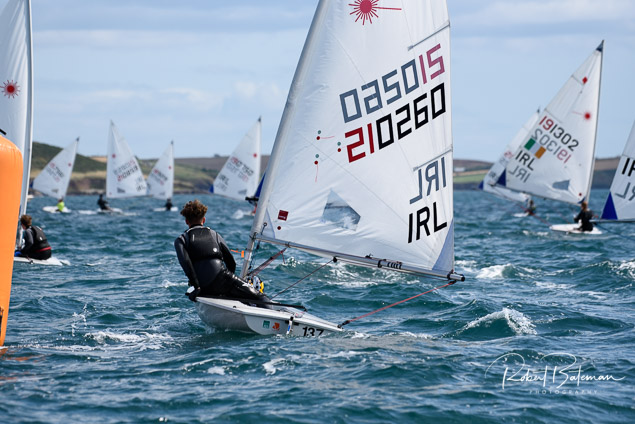
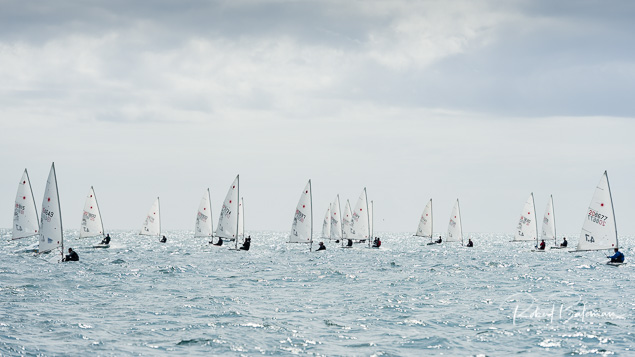
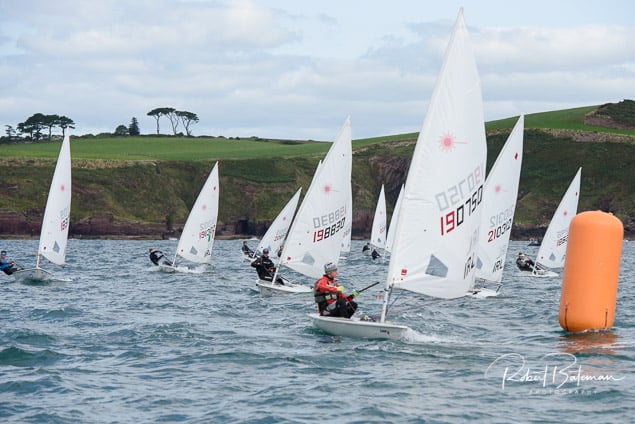
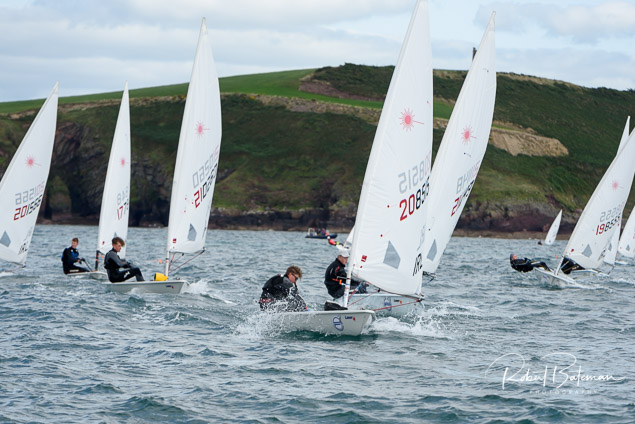

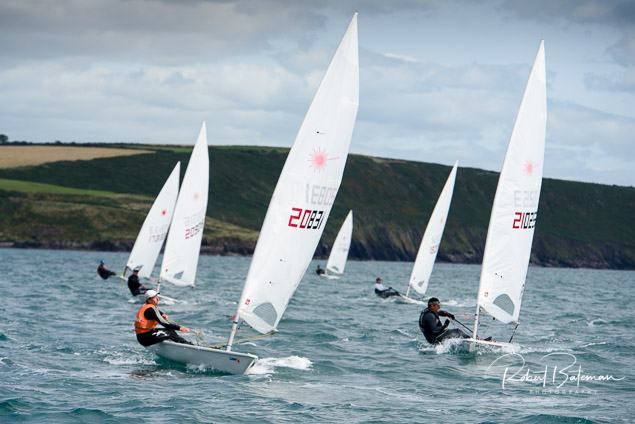
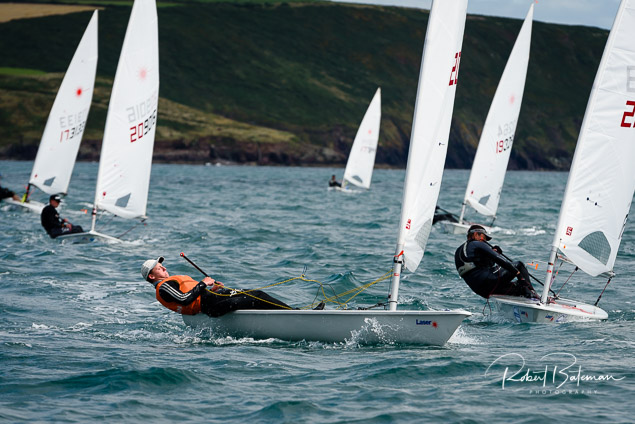
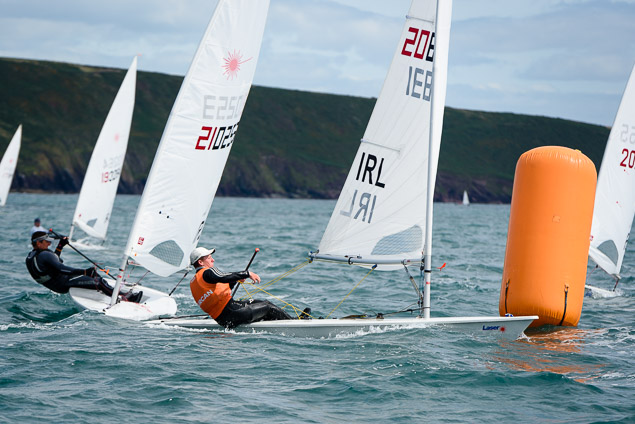
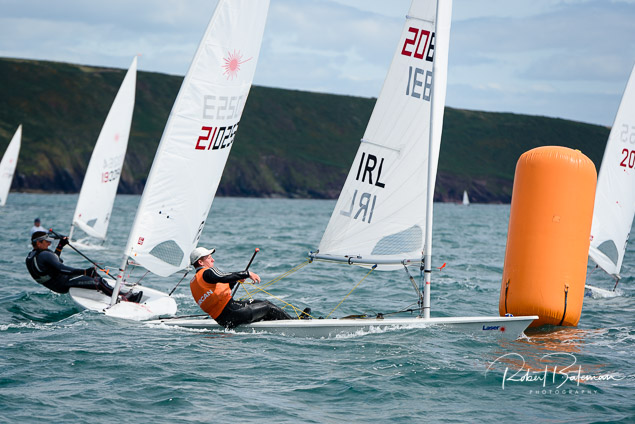
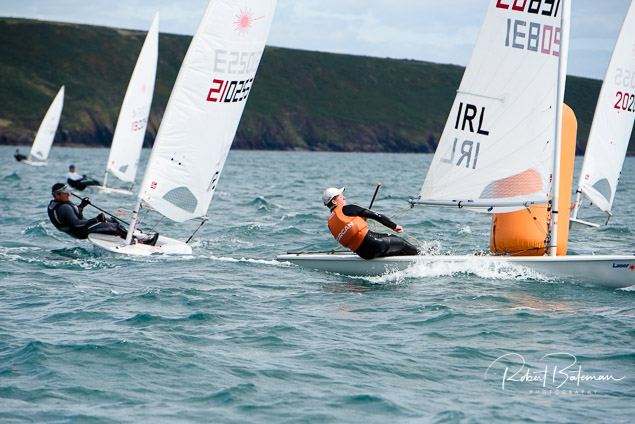


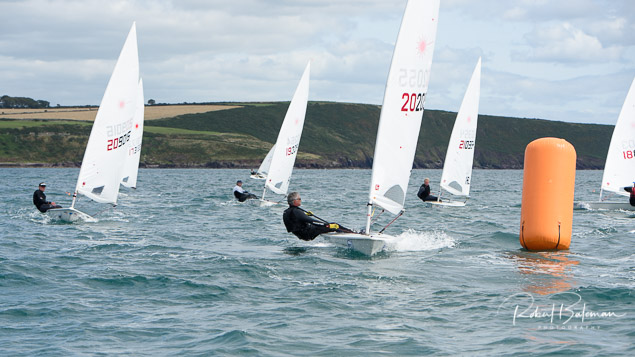
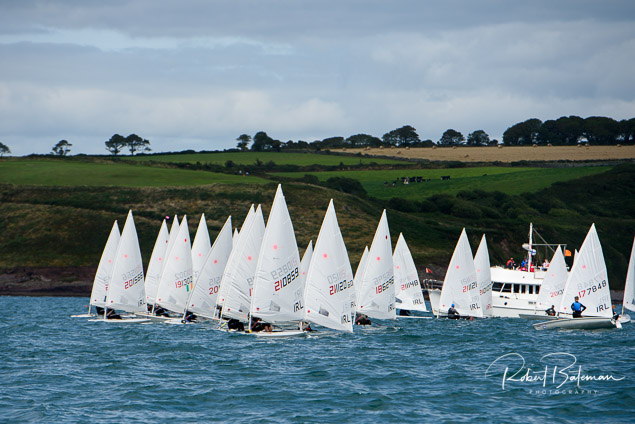
Sean Craig Finishes Seventh At RS Aero Worlds
#RSAero - It’s a seventh-place finish for Sean Craig in the Aero 7 at the Rooster RS Aero Worlds in France.
After a gruelling 15 races over five days, the third discard kicked in – allowing Germany’s Marcus Walther and Britain’s Ben Rolfe to knock Ireland’s lone entry in the new ultralight class two spots down the table.
But the Royal St George YC sailor maintained his consistent performance despite the persisting breeze during the week at Carnac, where wind speeds never dipped below 15 knots.
Higher up the table, the battle for first was won by Steve Cockerill over his fellow Briton, and RS class brand manager, Peter Barton.
Sean Craig Fifth After Nine Races At RS Aero Worlds
#RSAero - Sean Craig, Ireland’s lone entry in the Rooster RS Aero Worlds, is currently in fifth place in the Aero 7 division after three days of racing at the Yacht Club de Carnac in France.
As of yesterday evening (Wednesday 26 July), the Royal St George sailor and former RS200 Irish champion is nine races into the competition and showing consistent performance despite the fresh conditions, with strong winds between 15 and 25 knots since Monday (24 July).
The top of the table, meanwhile, remains a battle between Britain’s Steve Cockerill and Peter Barton, brand manager of the RS class.
Launched three years ago, the ultralight RS Aero had its first happy Irish customer in Daniel McNeills of the Royal St George — and also received high praise from Dun Laoghaire’s young Olympic Laser contender Finn Lynch.
#rssailing – To the untrained eye it was business as usual for the RS400 class racing out of the Royal Irish Yacht Club in Dun Laoghaire over the weekend. We had a big and very competitive fleet of 25 RS400's add to this the sight of new sails pouring out of the McCready's sailboats van on the first morning and the scene was set. The expectation of great racing, and a forecast for good wind and sun had everyone excited.
Overall results sheets for each fleet are downloadable below as pdf files.
The fleet's current top names are all well-established now. But look down the fleet at the new names and the general quality of the field and you will know that this event and this season is something special in Irish Sailing. Nobody in the top 12 was a rookie this year and Sean Cleary, defending Eastern Champion and runner up at the Sothern's and for the overall traveler's series last season was to finish up 12th. He was sailing with a new team mate Donal Murphy who had helped him to second RS400 in the local frostbites a few weeks earlier. Sean heads to England for a new job now and he will be sorely missed at Irish regionals. We look forward to following his progress, no doubt at the front of the UK 400 scene. He is expected to re-appear at the Irish Nationals later in the season.
New class member and Ex-helmsman's champ George Kenefick finished 16th overall. He will no-doubt be more competitive as the season progresses, and expressed some frustration at his form, he is one to watch over the season. Ex-Mirror world runner up and Ex-Mirror National Champion Andrew Woodward and crew Michael Walsh on their first outing with fresh sails came in 13th. Of course this is just one event and high quality sailors like Andrew, Sean and George will always find a way to excel in a class, but there is a feeling now in this class that anyone can be outside the top 10 in any race. A notable statistic looking at the results is that only three sailors managed to have all six race results inside the top ten over the Eastern championship weekend.
Now let's talk the business end of the fleet. Coming into this regatta, Alex Barry and Richie Leonard of MBSC/RCYC had been pushed hard for all of the 2014 season, but were an unbeaten pairing in the Irish events they attended together and had taken the travelers title, and Nationals. Gareth Flannigan and David Fletcher were of a pedigree that had them likely to compete for top honours, with a history of winning national titles in a variety of classes including the Laser and SB20. Local RStGYC team and Ex RS400 national champion paring of Emmet Ryan and his brother James were together again for their first regional since the 2013 season (James had been on a year of travel).
The Ryan team had been tuning up in the frostbites and it showed, with a great recovery from an average start line position and an opening race win to set their stall out early. They would be competitive to the end, and had they won the last race would have been champions. In the end the Ryan's had to make do with a couple or race wins that contributed to their 3rd place overall. James will be proud of the fact that he clearly has not lost his competitive edge on his travels.
Gareth Flannigan showed why he has about six nicknames mainly describing him as some sort of fish in water as he and David Fletcher had pace to burn upwind and were extremely consistent all event off the start line. Like Ryan he recorded two bullets, but he also managed to keep his other scores in the top 5 and had the sort of regatta dreams are made of.
Alex Barry and Richie Leonard were not going to be easy to beat, and showing their class, after a string of top 3 finishes, the top Irish pairing fought off David Rose and Ian Hef on the last run of the last race to record a bullet and do enough it would seem to take the regatta. As it turned out, a boat that had been disqualified for being OCS on day one had been reinstated (It felt from where I was sitting that a few boats were over on that start) and Alex and Richie were to be denied due to this points change and only by the a countback, having matched Gareth and David's 11 point tally.
This fleet is super competitive and there were just six points separating the 3rd placed Ryan team on 20 points with 5th and 6th placed teams Chirs Penny (Artemis-Racing) and Simon Martin, and David Rose and Ian Hef on 26. Ross McDonald and Dylan Gannon finished 4th just two points behind Ryan on 22, after an excellent regatta. Ross is an Ex-Laser National Champion. So congratulations to Gareth and David sailing out of BYC who are well deserved 2015 RS400 Eastern Champions. Excitement is already building for the Northern champs up next in the regional calendar. Remember for those in the fleet looking to sharpen up their skills, there is a sprint regatta out of the Royal St George Yacht Club on May 9th, for RS200's and RS400's.

RS Fevas
Sixteen Feva teams turned out to compete for the Eastern title this year. This is an exciting year with a trip to the worlds coming up later in the season. The fleet included two visiting teams from Galway (GBSC), and both fared very well in the event with a fourth for Aaron O'Reilly and David Carberry and a seventh for Brian Murphy and David O'Reilly. Great to see Feva's that are willing to travel and make this class really exciting.
The top three places were all local Dublin bay RSGYC sailors. Triona Hickson and Kathy Kelly won the first two races of the event and finishing just 3 points off the lead in third place could easily have been champions.
Toby Hudson-Fowler and Greg Arrowsmith had an excellent regatta and would finished second on 10 points, just one point behind Tom and Henry Higgins, who took the championship in the last race.
Congratulations to Tom and Henry Higgins who are RSFeva Eastern Champions for 2015.
RS200s
There were many very well attended events last season in Ireland. This season is an exciting one for the RS200's particularly as the fleet welcomes a revamped sail plan that modernizes the boats look and feel.
The turnout for this event was effected by exam season for the younger members of the class, so expect bigger fleets as the season progresses.
The top end of this fleet looked very familiar, as Marty O'Leary and Rachel Williamson sailing out of RSGYC continues to dominate the RS200 Class in Ireland with a performance including three bullets, two seconds and a third. Marty and Rachel had showed their class before the event, finishing runner up to the Ryans RS400 team in the frostbites.
They were matched this time on points by the every present Ex National champion Sean Craig and Heather King, who would only be second on countback having matched Marty and Rachel this time also on a final point's tally of 7. Frank O'Rourke and Sarah Byrne were eight points back in third, and Luke Murphy and Patrick Cahill had some great moments and finished fourth overall. Luke and Patrick are strong prospects for the future and sail out of RSGYC. Congratulations to Marty and Rachel who are RS200 Eastern Champions for 2015.
Royal Cork's Dinghy PY 500 Regatta Success in Cork Harbour
#rcyc – Weather obliged beautifully for PY 500 making a perfect Sunday morning event at Royal Cork Yacht Club writes Claire Bateman. And what a magnificent spectacle the PY500 (Portsmouth Yardstick) race turned out to be. The sun was shining and there was a Westerly breeze of some 15 knots lightening slowly during the race. The course was Windward/Leeward around laid marks and consisting of seven rounds.
The event consisted of a mixed dinghy race for vessels holding a PY Handicap of 700-1320. Results are downloadable below as a jpeg file.
Due to the thirty one boats participating and the different speeds involved there were officials in position at each mark to record each competitor rounding for each of the seven rounds. Due to the location of the course up and down the river outside the club magnificent spectator viewing was provided for the large numbers present.
There were many boats from different classes represented and they certainly provided spectacular viewing.
The representatives were from National 18s, 505's, RS 400, RS 200, a lone Finn, Fevas, Fireflies, Lasers of all rig types, a Rankin and the star of the show, a 29er that charged around the course showing such style with a fluorescent orange Gennaker. Spotted sailing his RS 200 with his wife Heather was Sean Craig from the RstGYC. Also sailing from the RCYC's own club boats were 2 Topaz, one Magno and one Omega.
In between all this flying action there were Optimsts, 420s and 1720s all setting out for training and all in all there was a tremendous buzz in the club.
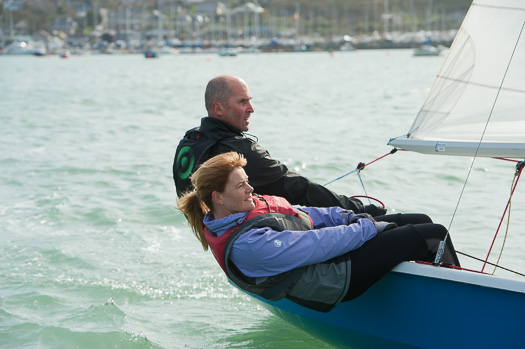
Sean and Heather Craig travelled from Dun Laoghaire for Royal Cork's PY 500. More photos by Bob Bateman below.
It must have made interesting and delightful viewing in the lovely conditions for the members and friends arriving for Sunday lunch at the Club's Globe Restaurant.
All credit due to the organisers and so obviously successful and enjoyable they might consider a repeat performance.
Craig Takes Another Laser Win on Dublin Bay
Although it was an evening that brought out the paddleboarders on to Scotsman's Bay it was equally a nice night for a Dublin Bay Sailing Club (DBSC) dinghy race with an ebbing tide, flat sea and six knot westerly breeze.
Sean Craig - just back from the SB3s Southerns in Fenit at the weekend - resumed his place at the top of the PY/Laser fleet with Chris Arrowsmith second and third Dave Cahill.
And prior to packing up for next week's Fireball World Championships in Sligo, Noel Butler and Stephen Oram were winners again in a seven boat Fireball fleet. Second was Frank Miller's Blind Squirrel from the DMYC.
DUBLIN PORT Dublin Bay Sailing Club Results for 7 JUNE 2011
FIREBALL - 1. nn (S Oram), 2. Blind Squirrel (Frank Miller), 3. Licence to Thrill (Louis Smyth)
IDRA 14 FOOT - 1. Dunmoanin (Frank Hamilton), 2. Doody (J.Fitzgerald/J.Byrne), 3. Squalls (Stephen Harrison)
MERMAID - 1. Tiller Girl (J.O'Rourke), 2. Lively Lady (G O'Neill & M Hanney), 3. Kim (D Cassidy)
PY CLASS - 1. Sean Craig (Laser), 2. C Arrowsmith (Laser), 3. D Cahill (Laser)
Craig Outwits Lyttle for DBSC Dinghy Honours
In a fine turnout for the Laser class, the Royal St. George's Sean Craig outwitted club mate Theo Lyttle for line honours tonight in the Laser dinghy class on Dublin Bay.
Tonight was the last race in the first series of the Dublin Bay Sailing Club season.
The 13-boat Laser fleet – that race as part of the PY class – was double that of any other fleet tonight as 10–12 knot westerlies provided perfect dinghy sailing for the 30 dinghies competing. DBSC set triangular courses for all five classes.
It was ideal world championship practise for the six Fireballs now only ten days away from the world championships in Sligo. Continuing a theme Noel Butler and Steven Oram were winners again on Dublin Bay. Second was Winder (E.Butler/O.Laverty) and third Blind Squirrel (Frank Miller) of the DMYC.
In the PY race, Lyttle closed on Craig at the top of the second beat but downwind Craig extended again to take a comfortable margin by the line. Third was Paul Keane.
There is more good news for the Olympic single-hander in Dublin with reports that numbers for club racing are likely to increase as the DBSC Summer season progresses.
So far 21 Lasers are entered in total in a PY fleet of 28 boats.
The sailors involved in the rebirth of the Laser as a club boat include former Laser national class champion Chris Arrowsmith and tonight's race winner, the SB3 and Flying fifteen ace, Sean Craig. Former 420 champ Theo Lyttle is a regular as well as Gary O'Hare.
Full DUBLIN PORT Dublin Bay Sailing Club Results for 31 MAY 2011 results are below:
BENETEAU 31.7 - 1. Extreme Reality (P.McSwiney/E.O'Rafferty), 2. Attitude (D.Owens/T.Milner)
BENETEAU 31.7 - 1. Extreme Reality (P.McSwiney/E.O'Rafferty), 2. Attitude (D.Owens/T.Milner)
CRUISERS 2 - 1. Cor Baby (Keith Kiernan et al), 2. Free Spirit (John O'Reilly), 3. Graduate (D O'Keeffe)
CRUISERS 3 - 1. Chouskikou (R.Sheehan/R.Hickey), 2. Grasshopper 2 (K & J Glynn), 3. Pamafe (Michael Costello)
CRUISERS 4 - 1. Maranda (Myles Kelly)
FIREBALL - 1. nn (S Oram), 2. Winder (E.Butler/O.Laverty), 3. Blind Squirrel (Frank Miller)
GLEN - 1. Glendun (B.Denham et al), 2. Glenshesk (L.Faulkner et al), 3. Glencorel (B.Waldock/K.Malcolm)
IDRA 14 FOOT - 1. Dunmoanin (Frank Hamilton), 2. Doody (J.Fitzgerald/J.Byrne), 3. Squalls (Stephen Harrison)
MERMAID - 1. Tiller Girl (J.O'Rourke), 2. Lively Lady (G O'Neill & M Hanney), 3. Kim (D Cassidy)
PY CLASS - 1. Sean Craig (Laser), 2. T Lyttle (Laser), 3. P Keane (Laser 1)
RUFFIAN 23 - 1. Alias (D.Meeke/M.McCarthy), 2. Golden Girl (Michael Carrigan et al), 3. Diane ll (Bruce Carswell)
SQUIB - 1. Tais (Michael O'Connell), 2. Sidewinder (D.Croke/R.Bowen)



























